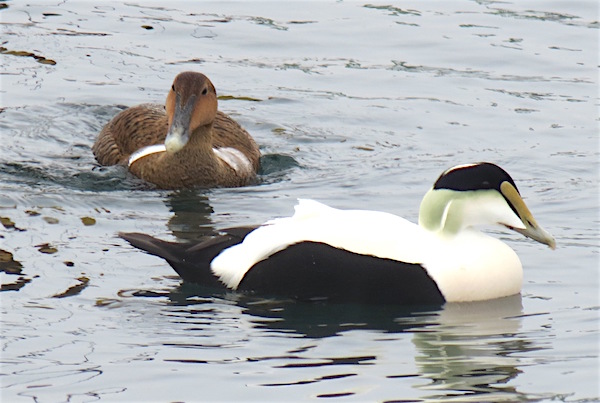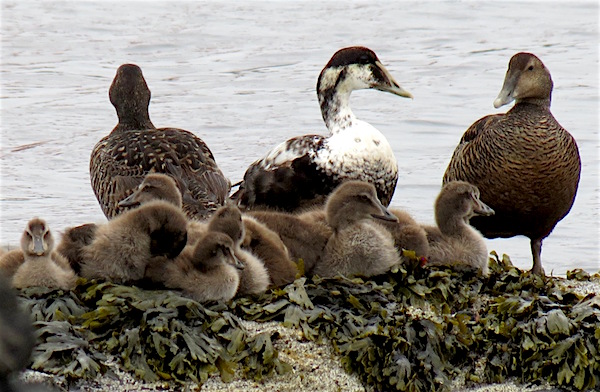06 Mar Eider sightings in Halifax Harbour

A pair of eider, North America’s largest duck, swimming off King’s Landing in Dartmouth. The mostly black and white bird in the foreground is the drake; his ruddy companion, the female.
Every winter, large rafts of eiders form up off the coast of Nova Scotia to bulk up for the breeding season. The female, who will go entirely without food during the more than three weeks she will incubate her eggs, stocks up on King’s Landing mussels in the photo below.

Although not formally designated as endangered or threatened, declining eider numbers have raised concerns for more than a century. The January 1914 issue of The Auk, a journal published by the American Ornithologists’ Union, carried “A Plea for the Conservation of the Eider,” after egg and down collectors nearly wiped out the bird in the 19th Century. Today, virus outbreaks, hunting, and Black-Backed Gull predation on nestlings seem to be the chief grounds for concern.
“In June and July of 2013, the shallows off Point Pleasant Park was used as the nursery for about twenty eider ducklings,” writes photographer Joshua Barss Donham. “The ducklings were attended by five or six females who, as the duckling grew, took them further and further from shore diving for food.”

“All this time, a group of males hung around far off shore” writes Joshua. “When the young Eider had grown to be almost as large as the attending adults, the two groups merged to form a raft of more than a hundred.”

